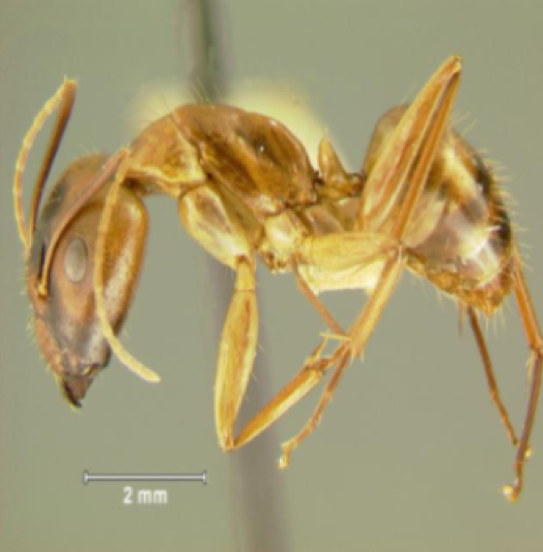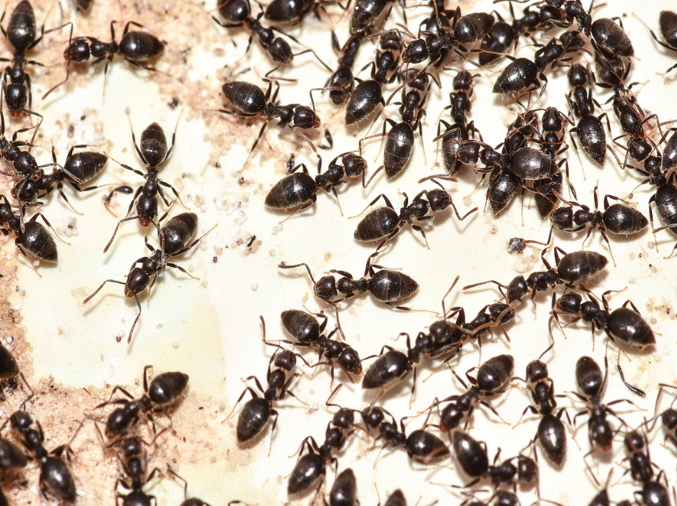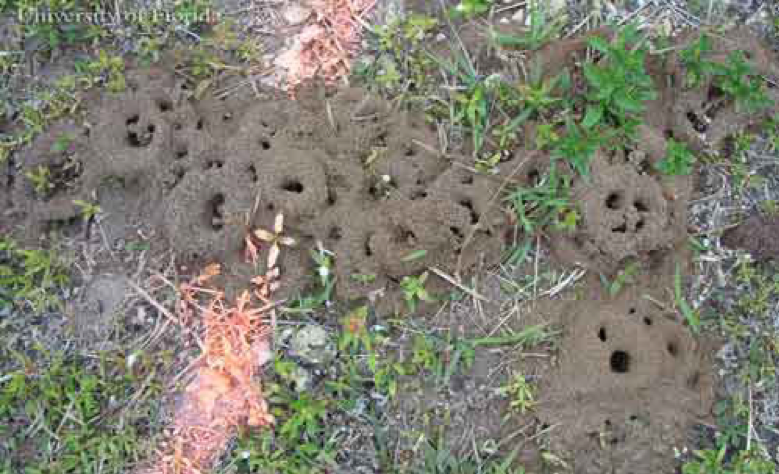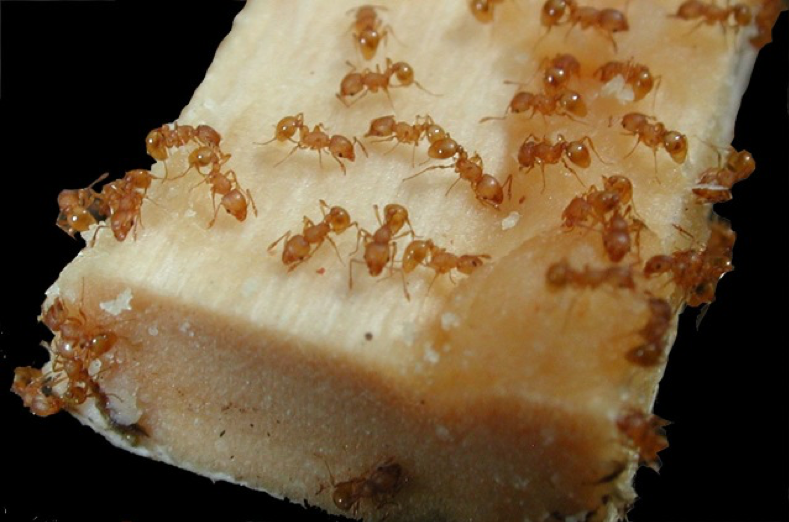
Ants are problematic pests that exist in most homes throughout Oahu. From tiny nuisance ants to wood-destroying carpenter ants and little fire ants, you’ve most likely experienced an infestation at some point in your life. Tiny black ants that crawl around kitchens and bathrooms are the most common for residents in our area. Homes that are new or old, clean or dirty, mansions or one bedroom apartments, can all suffer from ant infestations. Ants are extremely adaptable and have learned to live side by side with humans so long as they aren’t disturbed by professional pest control. Although most ants primarily live outdoors, traveling inside human-made structures in search of food and water, ant infestations can quickly get out of hand inside your home. In the Honolulu area, Hawaiian carpenter, white footed, big headed, and little fire ants are among the most abundant.
What kinds of ants live in Oahu?
Hawaiian Carpenter Ants

Hawaiian carpenter ants are not only prevalent in homes throughout the Hawaiian Islands, but also throughout Southeast Asia. They live in abandoned galleries within wood created by termites, or dead and decaying plant matter. They are the largest species of ant in Hawaii, measuring about ½ inch long. Unlike other carpenter ants, Hawaiian carpenter ants aren’t a massive detriment to the structural integrity of your home. They do not eat wood like termites and prefer to nest within nests and cavities already hollowed out by other pests. They may partake in a small amount of getting into wood, but it’s not their primary function.
White Footed Ants

White footed ants are about 1/8 inch in length with a black or brown body and yellowish white “feet”. You’ll find these ants wandering around your kitchen as they search for sweets and water. Although they aren’t especially aggressive and do not eat or nest within wood, white footed ants are still unpleasant when they flood your home with their colony. Outdoors, white footed ants are attracted to nectars and other small insects. You may spot them traveling in long lines on the exterior of your home towards an opening, leading to the source of the infestation.
Big Headed Ants
The big headed ant is a reddish-brown insect that can be seen in two sizes ranging from one-eighth of an inch to one-fourth of an inch. The best way to identify this type of ant is its extremely large head as compared to its body. Big headed ants are known for establishing clear trails between their nest and their food source. They not only feed on any food left out but also plants and dead insects.

As soil nesters, the best way to control big headed ants is by eliminating piles of lumber, keeping mulch away from foundations, sealing cracks, and trimming trees and shrub branches away from foundations.
Little Fire Ants

Little fire ants are reddish-brown with a square-shaped head. While they prefer shady territory, like in soil or under a canopy of trees, they will live in drier, bright environments if they must. They’re very hearty, which is one of the reasons getting rid of them can be a challenge. They sting, can kill small animals, and may destroy any fruits or vegetables you grow. Their sting is notoriously painful and can last for extended periods of time. To learn more about little fire ants, read our blog by clicking here.
What attracts ants to my home?
No one wants to find ants in their home, but it can happen to virtually any homeowner. Most ants create colonies where they can thrive which means they are constantly in search of a food source for survival, which can lead them into your home. Your kitchen is a perfect area for ants to infest with the potential for crumbs, pet food left in bowls, penetrable food packaging, and food such as fruit left out on tables and counter tops.
Ants typically live outside, sending scout ants away from the colony to search for food. These explorers are usually the ants that you find in your drain, on the floor, and around food items. Human food is also appealing to ants. Once the scout finds a food source, they signal other ants to follow his trail and continue to take food and bring it back to the colony. The number of ants following this same trail grows as their food source remains available.
Pet food bowls are a perfect way for small ants and other pests to thrive in your kitchen. Throw away uneaten pet food or lift it away from the floor into a sealed container at the end of each day to avoid this scenario. Ants and other pests can easily find pet food in poorly sealed containers such as the large paper bags that they come in. Frequently dumping water from their bowl can deter ants even further. Be sure to also clean the area around the bowls since dogs and cats aren’t always the tidiest when it comes to eating and drinking, and they create crumbs and water droplets that attract ants. If food bowls are left outdoors, close to the exterior of your home, it can also draw ants indoors.
Your kitchen is the most common place to find nuisance ants. They are attracted to resources such as food and water to keep the colony alive and growing. Inevitably, your family will end up dropping small crumbs after snacks and meals without knowing it. Unless you are hyper vigilant about cleaning and sweeping your floors, crumbs are bound to exist. Even if you use extreme care, keeping your kitchen floor clean, ants are also attracted to other food sources that you may not realize.
Are ants harmful to humans?
Most ants do not primarily live indoors. They travel between a food or water source that they find indoors, back to their colony outdoors. This means that bacteria living on the ground or in your pipes can surface and spread if ants cross your food. White footed ants are the most likely to cause infection because of their specific attraction to sugary and greasy foods such as cookies and chips. By crawling across your food, they can spread salmonella for you to ingest. That’s not to say that all food that ants have come into contact with are riddled with disease, but it’s better to be safe than sorry.
How can I prevent an ant infestation my home?
There are several steps that you can take on your own to stop an ant infestation before it happens. Try using the following tips to stop ants from getting into your house.
- Fix moisture problems such as leaky roofs, blocked gutters, and utility pipes.
- Correct poorly vented attics or crawl spaces.
- Store garbage cans in dry places (not under kitchen sinks). Empty garbage often and keep the area clean.
- Cut back tree limbs so they don’t touch or hang over you house.
- Inspect possible entry points, such as windows, and doorframes and pipes for small openings and caulk them.
- Examine firewood and remove infested logs. Keep firewood and other wood piles far away from the exterior of your home and use your firewood quickly once you bring them inside.
- Remove dead trees and stumps.
- Inspect plants for ants before bringing them indoors.
The best way to get rid of ants in your home is to call Sandwich Isle Pest Solutions for professional ant removal and ant prevention services. Call us or fill out the contact form on this page to get started!
What are Ants? Professional Pest Control Services in Pearl City HI
Serving Pearl City HI
